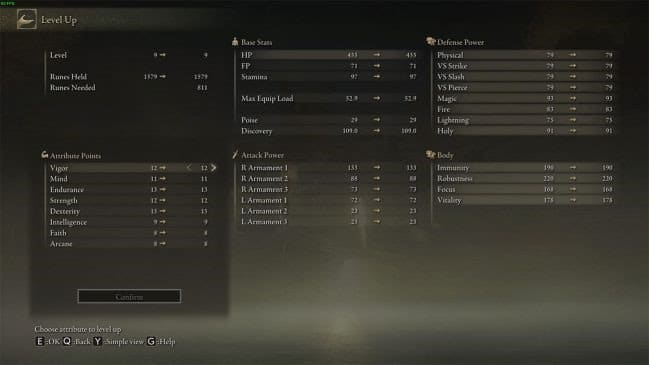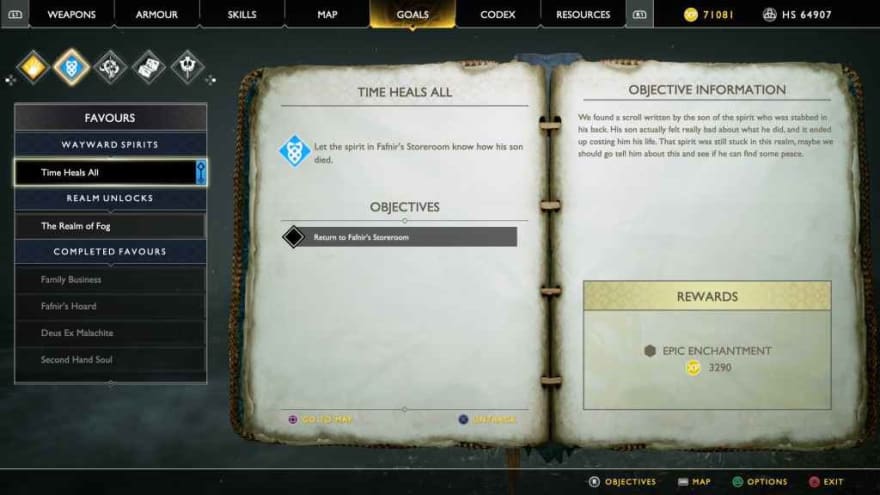When talking about building a career and working, we normally feeling of overwhelmed, dragged, or lack motivation. But when it’s come to video games and fun stuff, we easily get hooked on and stay there as long as possible.
Is there any real magic behind the addiction to video games that affect our willingness? Turn out, most video game designers are very well at defining stories, playstyle that leads players to achieve their desires through what they called gamified techniques.
So what will happen if we used those techniques and apply them to our daily work and study? In this article, let me tell you about my own experience with these gamified techniques and how to apply them to our real life.
The theory of flow that aligned with game design
During the 1970s, a psychologist named Mihaly Csikszentmihalyi experienced the state of Flow, which is the concept that describes a mental state of complete absorption and engagement in an activity. In his conclusion, he listed out what characteristics that make us feel pleasure and lasting satisfaction in activities:
- Rewards: The physical reward or the feeling of reward provided by the activity itself.
- Clear goals: Having a clear and specific process for a final goal. Which comes to the sense of direction and purpose. Allow us to focus on small, achievable tasks.
- Loss of consciousness: The flow state means that we fully focus on that activity and completely lost awareness of time and external actors.
- Direct and immediate feedback: Having the guiding, step by step that processes our journey toward the goal. Which arise the feeling of accomplishment and progress.
- The balance between skills and challenge: The challenge of the activity is hard enough that required full attention to overcome but not too hard which leads to self-doubt and overwhelm. And so we experience the feeling of mastery.
- Be able to control the situation and the activity: During the activity, Participants have the power to control every situation. Which can provide a sense of autonomy and empowerment.
Actually, game’s elements are all about reaching and developing those characteristics through game design techniques. By applying and combining multiple techniques together, game designers are able to make players feel one of the above senses.
In the upcoming section, let me go through the 5 most common techniques that successfully lead to the pleasant feeling and satisfaction of players.
Storyline, Quest logs
In video games, players are always starting at some point and when you started to complete the first stage (normally it will be the tutorial stage), you discovered your purpose and goal for the end game. The game then throws you into the map with missions, objectives and quest logs all over your play-through. This creates the feeling of guidance and control over what you are doing.
In the real world, it is challenging for someone to tell if he/she has a goal or 1 purpose to pursue toward their career. And if you ask students whether their studying major will fit their future job, most will be uncertain about their answer.
So how I am applying the guidance technique in video games to help me verify my goal and process further on my journey?
Because of the uncertainty of the future, I usually don’t set a goal for more than one year. Instead, at beginning of the year, I will create goals and checklists during the year. And then I split every single big mission into small, achievable actions that I can finish in less than a month.
During the process, remember to log and write down every task you are doing. And so every time you forget what is your goal and lost, you can always check the process to make sure you are staying on track. One note here is that the tracking table should frequently check and update to make sure your quest logs are up-to-date and fit with your current status (I use Notion and Trello to track the process and update weekly).
Check out my article on how to successfully plan your goal for a whole year
Status Bar
The second idea of gamify technique is related to the feeling of improvement and accomplishment by processing the game. During the gameplay, players usually come into the time where their character got to level up and upgrade their attributes to become stronger as a reward for their grinding.

This seemly can’t happen in real life where one after a whole day of working and studying then goes home and just opens the “attributes table” to see if today his intelligence and strength are growing.
In my case, I love the idea of having my own stats and I can track them whenever I want to. And so I try to find the parameters that align with my skills and job. For example, because I am a programmer and a technical writer, stats that evaluate my skills could be:
- Number of committed codes I push during the day
- Number of Jira tasks that I contributed to and finished
- Number of technical articles that I have published
- Number of my online audience
Try to build a system where stats align with your skills so you can evaluate and review them daily.
Although self-reflection on skill can help you have the feeling of growing, we are not 100% sure that our self-evaluate states reflect our true performance. Having reviews from other people’s perspectives so that you make sure your current processes are truly helping people and creating real value.
Difficult Level, Boss Fights
At the beginning of the game, normally players will have the opportunity to choose which difficulty level they want to be or how many challenges the player wants to face. And during the stage play, when it comes to the end of the area, the music gets louder and a big, ugly boss appears that we know we are at an end of the stage. Usually, to beat this boss we have to use all the skills we have learned during the play process.
Combine two factors of the ability to choose a difficult level with the boss fight, we have the gamify techniques which embrace the feeling of empowerment and mastery where the player take increment challenge over time as their level grow up but also they have the control of situation whether the challenge too hard for them or not.
But in the real world, the fact that we are preparing for the upcoming final exam or interview gives us risk and chaos since we only have one life and we cannot control how the big test is ahead belike. But the good news is, we can lower the risk of the exam by turning it into small, consumable information.
By splitting the learning information into smaller objectives that match our best ability, we remove the risk of consuming too much information and take the control of what we learn and do.
For example, if I have a technical interview in the upcoming 2 weeks about a senior Front-end engineer role, firstly I will list what questions and requirements I will face during the technical interview. Then, I split them down into smaller pieces, consumable information. Such as if the requirement is related to React framework, then I must understand what React framework means, the life-cycle of components, how to use React hooks, etc…
By replacing a big chunk of the learning curve with smaller, and easier game, I manage to continuously improve my skill to match the requirement without worrying about the big boss ahead because I know in the end, my skills will be strong enough to beat the tough boss to hell!
Multiplayer, NPC and Social Interaction
In some online video games, such as League of Legends, Fortnite, or Dota the approach is about focusing on people’s interaction and competing with each other to achieve victory. This drive into the fact that human is a socially kind and by competing with each other on a large, centralized map, the players are engaging with the feeling of suspense, and unpredictability with somehow align with human’s natural desire for respect.
More than that, to help players stay away from feeling lonely, single video games often come with the idea that the main character has a partner who can help them with some tasks during the play or even chat with them while they are bored.
What can we see from the above examples? Humans are likely more committed to their work when having social connections than doing the work alone.
Knowing that we can leverage our ways to take action based on human interaction. Such as we can create a social group where people help each other with learning and working which improves the feeling of belonging and community interaction that you are not alone on the path of achieving your final goal.
Another way is that you can find someone with the same level and score as you and ask them to become your competition. Having healthy competition helps you a lot in productivity and performance.
Season Pass, Daily Reward
If one thing I can mention about video games is that they are very good at making people instill the feeling of Fear Of Missing Out (FOMO). We can easily see examples of gamified techniques that engage the feeling of losing in many mobile games, players will get rewards for their login and if they can keep the chain, the reward will get bigger and bigger.
Or the recent idea that driving players to keep playing the game is the season pass feature. By having this feature, players will earn points whenever they are playing the game, the more points players earn, the more rewards and collectible items they can earn. One killing technique here that keeps players grinding the game is that season pass rewards are only available for a limited time only and if players missed the reward, they will lose It forever.

At first hearing about this technique, I was thinking if this technique is a good way to generate positive value if I apply it in real life but we can’t deny that by creating FOMO effect, the games successfully keep us staying as long as they want. This led me to think about one aspect that can apply to real life: consistency and habit.
In the book Automic Habit, James Clear have mention the reward system when building habits:
Rewards are the end goal of every habit. The cue is about noticing the reward. The craving is about wanting the reward. The response is about obtaining the reward. We chase rewards because they serve two purposes: (1) they satisfy us and (2) they teach us.
In reality, we hardly see the reward system apply to our daily work: we don’t get a prize for doing homework, we don’t reward for learning new things every day, etc… and so, studying becomes boring and repetitive tasks that we must do without any motivation.
By implementing a self-reward system into our daily habits, we manage to encourage our actions to complete the task and make it consistent. For example, if you have a checklist of things you should do today, give yourself a little reward when you finished one like enjoying your favorite food or sharing your achievement with your close friends.
And if you complete a big boss fighting tasks, like getting a promotion or getting a high score for an exam. Don’t hesitate to reward yourself with a unique collectible item that brings the joy of achievement and completion.
That is all for the list. Thank you for reading and hope this article helps you on become more productive by apply gamify technique into your real life.
References
- https://thinkgamedesign.com/flow-theory-game-design/
- https://www.gamedeveloper.com/design/understanding-the-flow-channel-in-game-design
- https://en.wikipedia.org/wiki/Multiplayer_video_game#:~:text=Due%20to%20multiplayer%20games%20allowing,absent%20from%20single%2Dplayer%20games.
- Actionable Gamification – Yu-kai Chou
- Flow: The Psychology of Optimal Experience – Mihaly Csikszentmihalyi




 junedang.com
junedang.com



Top comments (0)